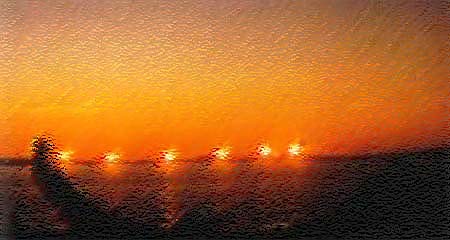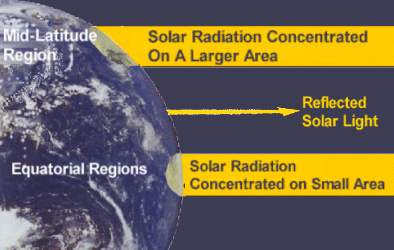 |
 |
| Home | Welcome | What's New | Site Map | Glossary | Weather Doctor Amazon Store | Book Store | Accolades | Email Us |
 | |||||||||
Weather Almanac for June 2006ARCTIC SUMMER SUNThe Arctic summer brings with it the midnight sun. But how warm is that sun within the Arctic Circle? The simple answer is "not very."  Midnight Sun over the ArcticOn the Summer Solstice when the sun is highest in the northern skies, its altitude at the Arctic Circle only reaches 44 degrees above the horizon, equivalent to the solar elevation of late March in Boston or Chicago; and 23.5 degrees at the North Pole, about the same as those cities in December. In the High Arctic, the sun's rays strike the surface through a shallow grazing angle, spreading the solar beam over a much larger area and thus reducing its strength. You can see a similar spreading effect by comparing a tree's shadow size at noon with that in the early evening.  As a result of this beam spreading, the solar strength at the Arctic Circle at local solstice noon is only about 40 percent of that at the Equator at the top of the atmosphere. At 80 degrees North latitude, it drops to 17 percent. The solar energy shining down on the Arctic surface is further depleted as it passes through roughly six times more atmosphere than in the tropics. If there is a saving grace, it is the long hours of arctic sunlight which makes up for the weak solar beam. Depending on the latitude, the length of the day can last twenty hours or more through much of the solar summer season. With 24-hours of sunlight at 80 degrees North, the total daily solar input at the top of the atmosphere (12.5 kilowatts-hr per square metre) is about 35 percent more than falls on the Equator (about 9.1 kilowatts-hr per square metre) where daylength is 12 hours. The solar energy figures given above are for incident solar radiation. Because ice, water and snow are good reflectors of solar radiation, particularly when the sun angle is low (sun near the horizon), much of the solar radiation that does reach the polar surface is reflected back into space. As a result, for heating purposes, the sun's beam is even less effective. The bottom line: If your travels take you to the Arctic in summer, take a warm coat. Learn More From These Relevant Books
|
|||||||||
 |
To Purchase Notecard, |
Now Available! Order Today! | |
 |
 |
NEW! Now |
The BC Weather Book: |


